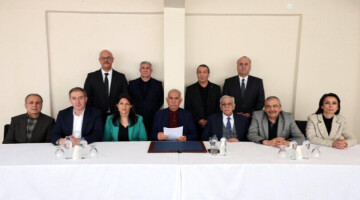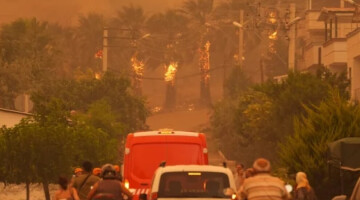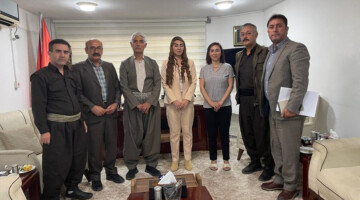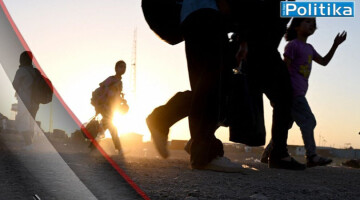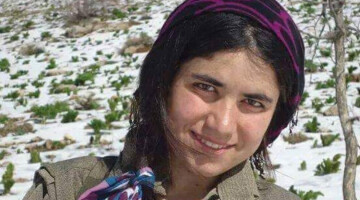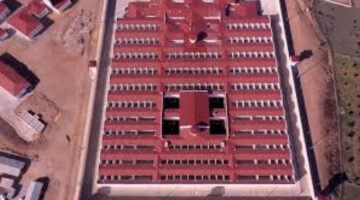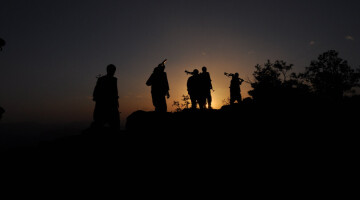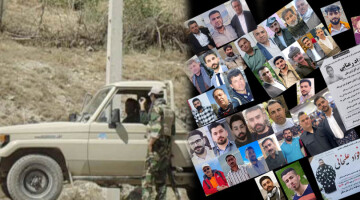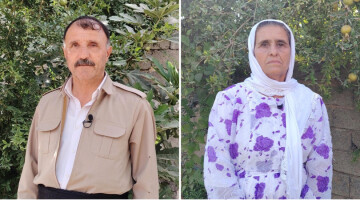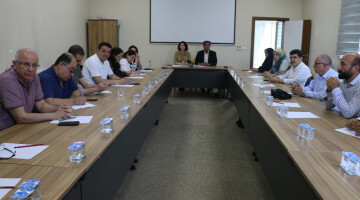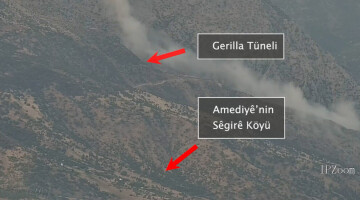It has recently been revealed that the Turkish army, which has resorted to all kinds of atrocious methods in its invasion attacks since 14 April 2021, against the Medya Defence Areas, headquarters of the Kurdistan Freedom Guerrillas, has also burned the dead bodies of its own soldiers.
The Turkish army, which used this brutal method against its own soldiers, has burned civilians alive, executed them by firing squads or bombed them in Kurdistan myriad times before. It punished the Kurdish civilians with these methods after it suffered heavy losses in armed clashes with the Kurdish freedom guerrillas.
Below is a list of the main events that revealed dirty and brutal practices of the Turkish army in Kurdistan:
TURKIHS ARMY THREW KURDISH CIVILIANS INTO WELLS FILLED WITH ACID
The wells filled with acid located between Silopi and Cizre exemplified the notorious practices of the Turkish army in Kurdistan. In the 1990s, the Turkish army's counter-guerrilla organization JİTEM threw hundreds of civilians it abducted or detained in the Botan and Mardin regions into the wells of BOTAŞ (public petroleum pipeline corporation) along the Cizre-Silopi road. The exact number of civilian killings is still unknown. In 2009, following the statements of Tuncay Güney, a key figure in the Ergenekon investigations, and informant Abdülkadir Aygan some wells were examined in the Silopi district of Şırnak.
Dozens of human bones and burnt or bloody cloth pieces were found in the wells. Witnesses and former members of JİTEM revealed that civilian people were kidnapped and thrown into wells after they were burned with acid. Although a family which lost its 70 members and relatives in the region requested an investigation and concomitant public backlash, the public prosecution against JİTEM members was suspended after a while.
IMAM EXECUTED BY FIRING SQUAD
On June 13, 1993, ARGK guerrillas attacked a Turkish army post in the Görümlü (Bespîn) town of Şırnak's Silopi district. The Turkish soldiers, who suffered heavy losses during the armed conflict that lasted for hours, attacked residents of the town the following day in order to wreak their anger on the civilian population. Turkish soldiers tortured the villagers following the orders of the Brigade Commander Mete Sayar, and executed 6 civilians, including the imam of the village, İbrahim Akın, by shooting and setting the village on fire. Before the executions, Turkish soldiers put a cross on Imam Akın's neck and beat him until he passed out.
Mete Sayar, the 'murderer general' of the 1990s, who was also the Deputy Commander of the Turkish General Staff’s Special Operations Department and took part in the 1974 invasion of Cyprus, confessed the Bespîn massacre and the execution of the imam in an interview published by Hürriyet newspaper the same year. “About two months ago, an imam of a village was killed during a military operation. A cross necklace was found among his belongings, and he was uncircumcised. We realized that a man we know as an imam was an Armenian,” Mete Sayar said. The Turkish commander did not hesitate to insult both the Armenian people and the Muslims in his interview.
9 CIVILIANS BURNT TO DEATH IN VARTINIS
On October 2, 1993, Turkish soldiers, who received the dead body of a non-commissioned officer who died in a conflict with ARGK guerrillas, opened fire in the air while passing through the Vartinis (Altinova) town of the Korkut district of Muş, saying that "Tonight, we will come and burn your village”.
Turkish soldiers set fire to the village at around 3 am on October 3, 1993. Nasır and Eşref Öğüt whose houses were set on fire, died in the fire together with their 7 children, the eldest of whom was 12 years old and the youngest 3 years old. Eşref Oran was pregnant during the massacre. Aysel Öğüt, the only survivor, later filed a criminal complaint concerning the incident.
Shortly after, the Muş Prosecutor's Office sent the file to the Diyarbakır State Security Court, with a decision of lack of jurisdiction claiming that "The PKK was responsible for the incident and it is a terrorist crime." The State Security Court closed the file, agreeing that it was a "terrorist act" and "the perpetrators are not known".
Years later, three high-ranking Turkish soldiers were acquitted in the lawsuit concerning the Vartinis Massacre. The lawyers of the Öğüt family who objected to the decision of the Court of Cassation filed a new lawsuit. In the first hearing held at the Kırıkkale 1st High Criminal Court on September 21, 2021, an arrest warrant was issued for the then Gendarmerie Regional Commander Bülent Karaoğlu. However, Karaoğlu has not been brought to court since then.
TURKISH SOLDIERS EXECUTED 9 SHEPHERDS IN SOUTH KURDISTAN
In 1995, the Turkish army deployed 35 thousand soldiers in an invasion attack, which it named "Steel Operation", in order to occupy South Kurdistan territories from four directions. However, the attack to which the Turkish rulers of the period attached great importance faced formidable resistance by the Kurdistan guerrillas. When repelled by the ARGK guerrillas, the invading army started to target Kurdish civilians.
During the invasion attack, 11 villages along the border line were bombed by the invading army, and numerous civilian vehicles were targeted. In the first days of April, the Turkish army carried out one of the most brutal massacres in its history. On April 2, 1995, Turkish soldiers executed 9 shepherds in an open area between the villages of Bawerkê and Benata, located near the Dihok province. The names of 7 of the shepherds who were killed for allegedly helping the guerrilla forces are as follows: Abdülkadir İzzetxan, İsmail Hasan Şerif, Serbest Ebdulkadir, Ebdillah Kerim Huseyin, Abdurrahman Muhammed, Şerif Guli Zikri and Ehmed Fettah.
THEY SHOT AND BURNT ABDUCTED CIVILIANS
In the run-up to the 24 December 1995 elections, Turkish state officials demanded a ceasefire from Kurdish leader Abdullah Öcalan. After the intense war in Kurdistan, Öcalan declared a ceasefire in a statement to MED TV on December 15, 1995 to pave the way for a new peace process. In the first days of 1996, after the elections in Turkey and North Kurdistan, Ankara responded to the ceasefire declaration with a new massacre.
On January 12, 1996, Turkish soldiers raided the villages of Çevrimli and Yatağan in the Güçlükonak district of Şırnak and detained a group of village guards and villagers. On January 15, 1996, some of the villagers were shot shortly after they were put in a minibus which was set on fire by Turkish soldiers. The Turkish General Staff, which made a statement after the incident which killed 11 Kurdish civilians, tried to put the blame on the PKK. However, it was soon revealed that the Turkish state's killing machine in Kurdistan, JİTEM, was the perpetrator.
9 CIVILIANS KILLED BY EXPLOSIVES IN PEYANIS
On September 16, 2011, 4 days before the end of a ceasefire announced by the KCK, the Peace Democracy Party (BDP) was scheduled to have a meeting with the then Prime Minister, Recep Tayyip Erdoğan, in order to continue the ceasefire. However, an hour before the meeting, an explosion took place while a civilian minibus was passing near the village of Peyanis (Geçitli) in Hakkari. Explosives placed on the road by Turkish soldiers killed 9 civilians inside the minibus.
On the same day, in line with a peace plan presented by the KCK, a delegation from Ankara was meeting with Öcalan in the Imrali prison. The Peyanis massacre took place while the talks with the state delegation were continuing. In a meeting with his lawyers following the massacre, Öcalan said the following: “The meetings here were also bombed with this latest explosion.”


